Procrastination does not equate to laziness











 By Hailey Fargo STAFF WRITER
By Hailey Fargo STAFF WRITER
Local psychology experts say procrastination negatively affects almost everyone at some point in their lives, but it’s not necessarily a matter of self-control or laziness.
Ghiath Arodaki, San Jose State industrial and systems engineering senior, said he finds himself procrastinating quite often.
“On one side, you want to achieve something, you have goals in mind and . . . that ambition is your drive, your motivation,” Arodaki said in a Zoom call. “But on the other side, there is this ‘live in the moment’ feeling.”
Lesther Papa, SJSU psychology assistant professor, defined procrastination as putting off something important even though the consequence of doing so will likely lead to a negative outcome.

Papa said people often simplify


the cause of their procrastination to laziness, bad time management or that they work better under pressure.
He said there are many unseen factors that drive procrastination and hinder a person from completing tasks until the last minute.




Those elements can include mental health, low self-esteem, self-sabotage and other environmental factors.
Joseph Zamaria, University of California, San Francisco associate clinical professor of psychiatry and behavioral sciences and program director of psychotherapy, said these factors will be unique from person to person.


“There’s conflict involved inside a person,” Zamaria said in a Zoom call. “There’s a part of oneself that wants to get the thing done and there’s another part of oneself where they don’t want to do the thing.”


Papa said deadlines are also a component that contribute to a person’s procrastination.

“The biological processes in your body will respond to deadlines, for example, in the same way that it would to a bear attack, lion, spider,” he said.
Papa said our bodies react to deadlines as if it will harm us and putting it off allows us to avoid the threat.

“The thing though is that the deadlines are often not harmful, right, and so what happens is the deadline tends to trigger something that you perceive as harmful,” he said.
Papa said the key is attempting to figure out what people individually find so threatening.
“It’s usually not the deadline itself but then something connected with that deadline,” he said. “Whether it be fear of failure, fear of not doing a good job, maybe realizing that you’re unprepared for that deadline and being too afraid to ask for help.”
Papa said bodily response occurs
Continued from page 1
because of the amygdala, a structure in the brain.
“One of the key aspects of the amygdala is that it is the thing that helps you sense fear and so it works with other structures in the brain to release a hormone called cortisol . . . a stress hormone,” he said.
Papa said cortisol is the chemical in the human body that slows digestion and reroutes some of that energy into muscles to fight or flee from a situation.
“This cortisol, after it gets to a certain level, typically your hippocampus, which is usually what is implicated in memory, your hippocampus kind of monitors that system and signals to your body ‘OK, alright, we got enough cortisol here, we have enough stress to motivate us to do something,’ ” he said.
Papa said after the situation is over, cortisol levels will decrease, and biological responses get back to normal.
“But what happens is then, if you are under stress for a very, very long time that cortisol actually starts to damage structures including the hippocampus itself,” he said. “It makes that hippocampus less effective at its job, at being able to control that cortisol level.”
Zamaria said it is also because of negative-reinforcement strengthening a person’s desire to put off their tasks.
“You’re taking something that is aversive, unpleasurable and you’re making it go away and by making the bad thing go away, you’re increasing a behavior, in this case, procrastination,” Papa said.
Papa said people keep procrastinating because they remember how good it felt to escape their stress the last time.
“You’d rather release that dopamine in your brain . . . it feels better than studying,” Ghiath Arodaki said.
Additionally, Arodaki said there are moments when people find themselves completely distracted.
“It was a Saturday morning . . . that day I woke up early and I had my phone on, and I saw one of the things that were trending was Silent Hill,” Arodaki said regarding the horror video game franchise. “It brought back nostalgia and I spent the next two, three hours opening things . . . rather than going and starting my day and studying.”
Arodaki said he chose to go on his phone even though he knew he could have spent his time in a more productive way.
“Even though you go through the punishment then later of whatever the
before, during and after he procrastinated.
“Recently what I’ve been feeling is ‘Oh I have to do this, I’m very excited because that will get me to my goal,’ and then I open it up and . . . resistance is the first thing I feel,” said Arodaki. “My focus slips and unfortunately, I procrastinate.”
participating in activities that benefit your future rather than procrastination.
He said metabolizing stress can help manage the feelings that trigger procrastination, which can be done through stretching, cardiovascular exercises, walking, a bike ride, etc.
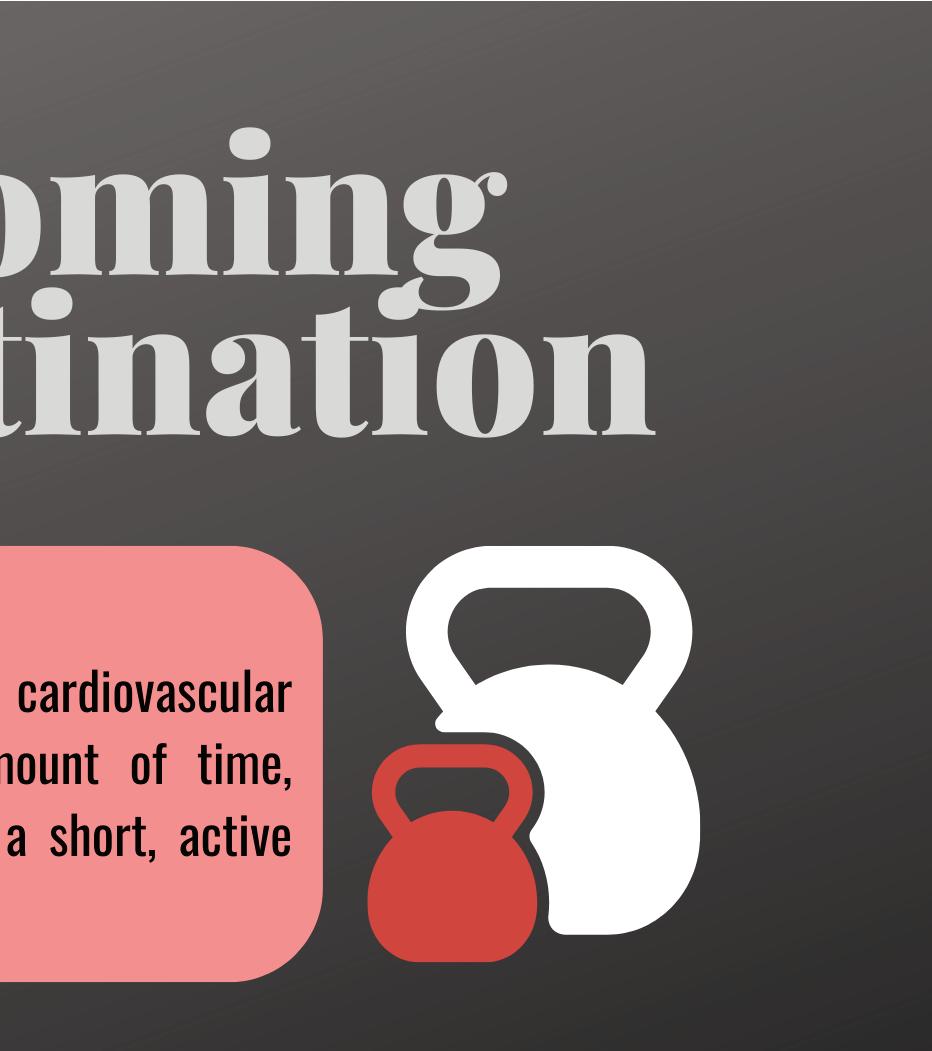

Although being under constant stress for too long can have harmful effects on the human body, people continue to procrastinate repeatedly.
“We’re inclined to be avoidant of change and we’re inclined to be avoidant of pain or of suffering,” Zamaria said.
negative outcome is, the bad grade, the guilt for not doing the assignment . . . because [procrastination] feels good and is pleasurable, that reward system then kinda outweighs the punishment system,” he said.
Arodaki described his experiences
He said while procrastinating, whatever distraction he chooses to partake in is not actually enjoyable because in the back of his mind, he thinks about the tasks he needs to complete.
“Afterwards, you feel totally hungover like, ‘What did I do?’ ” Arodaki said. “I just wasted time. I could have used that two, three hours that I just wasted to finish that task.”
Zamaria said procrastinators can overcome those internal battles that cause them to postpone their responsibilities, including remaining committed to a “non-judgmental, compassionate, curious attitude of exploring oneself.”
Papa said it starts with looking internally to understand the meaning behind procrastination.
“The key thing is not to talk about the fact that you’re avoiding your work, but you’re talking about the reason why you avoid it in the first place and that is the key distinction,” he said.
He said it is important that people try to shift their mindset to focus on how completing their assignments can help them to move forward in their lives.
“The thing about procrastination is it feels great and delicious in the moment, right, but later on that’s where the negative consequences are,” Papa said. “So what you want to do is take a look at ‘What is the long-term goal about the thing that I do?’ ”
Papa said focusing on long-term goals will help switch motivation toward
Papa said it is essential to find a good workspace with no distractions to focus on tasks avoiding procrastination.
Additionally, Zamaria said changing habits little by little is an effective way to prevent future cases of procrastination.
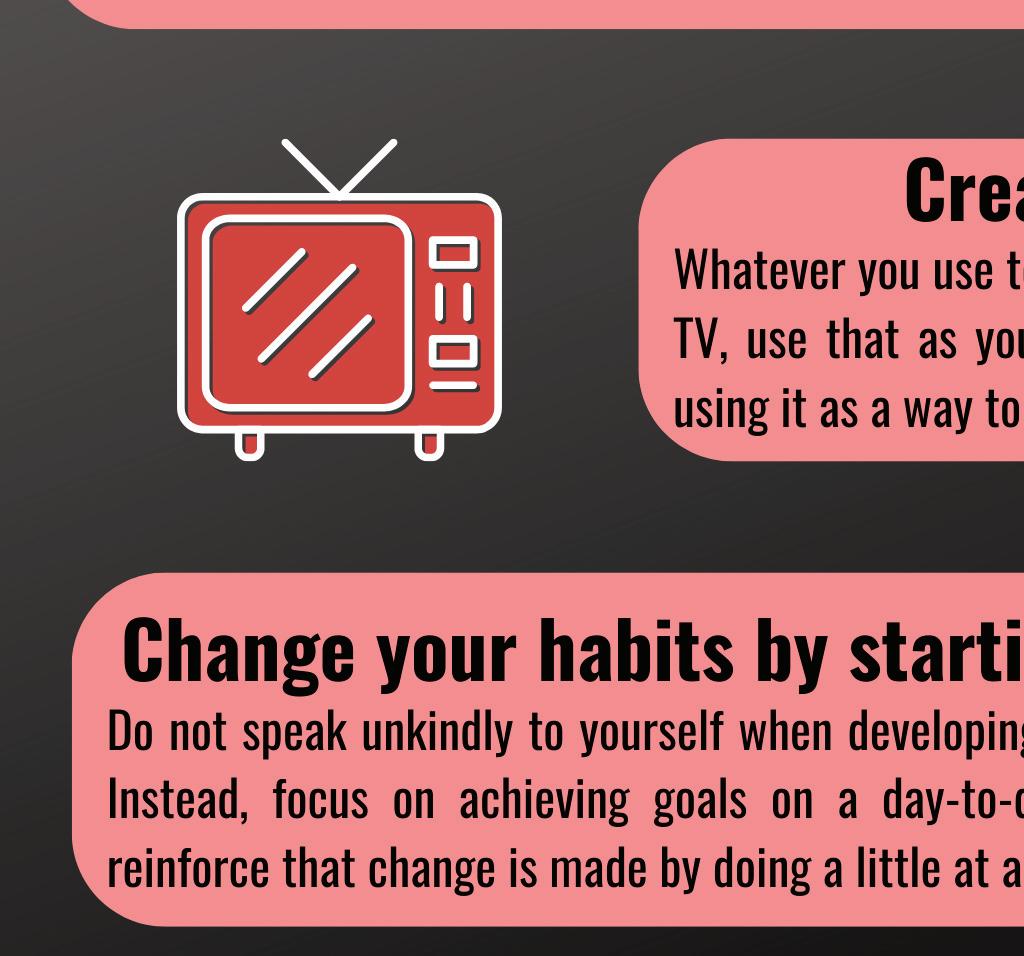

“Just stay with the thing for 30 minutes, even if you write two sentences in 30 minutes, it’s like building a muscle, it’s like being able to tolerate that sensation,” Zamaria said.
Papa said while procrastinators might not benefit from putting off their responsibilities, it can help them understand what is significant and insignificant to them.
“That choice to go with your valued activity, that could be a way to learn from your procrastination,” Papa said.
He said working on an assignment for 45 minutes and then watching TV afterwards allows it to become a reward for you rather than a source of procrastination.
“If you’re going to learn from your procrastination, that’s what you want to learn,” Papa said. “Learn how to give yourself those procrastination activities as rewards, as earned activities, versus activities to distract from really important things.”
It’s usually not the deadline itself but then something connected with that deadline,Whether it be fear of failure, fear of not doing a good job, maybe realizing that you’re unprepared for that deadline and being too afraid to ask for help.
Lesther Papa SJSU psychology assistant professor
We’re inclined to be avoidant of change and we’re inclined to be avoidant of pain or of suff ering.
Joseph Zamaria UCSF associate clinical professor of psychiatry and behavioral sciences, program director of psychotherapyINFOGRAPHIC BY CAROLYN BROWN





After suffering back-to-back losses for the first time this season, the San Jose State football team bounced back, defeating the University of Hawai’i at Mānoa 27-14 on Saturday afternoon at CEFCU Stadium.

Spartans running back Kairee Robinson had his best performance of the season, rushing for 148 yards and one touchdown.
Former Hawai’i and current SJSU quarterback Chevan Cordeiro completed 17 of 26 passes and passed for 208 yards and two touchdowns.
The Spartans’ victory over Hawai’i is the second consecutive win for SJSU in the Dick Tomey Legacy Game.
The Dick Tomey Legacy Game is SJSU and Hawai’i’s annual game that honors former head coach Dick Tomey, who was head coach of both teams during his coaching career.
“We have a history of epic battles with [Hawai’i,]” said SJSU head coach Brent Brennan. “It’s particularly special for me because of my relationship with Coach Tomey and keeping that trophy for another year means a lot to me.”
The Spartans scored on their second possession of the game on a 5-yard touchdown pass from Cordeiro to Elijah Cooks to put SJSU up 7-0.
SJSU hit a slump to start the second quarter. The Spartans failed to convert their first three possessions of the quarter into points and let the Rainbow Warriors creep back in.
Hawai’i strung together a few solid drives in the second quarter to get them into
field goal range where kicker Matthew Shipley knocked down two field goals to get the Rainbow Warriors on the board.
With just over a minute left in the first half, the Spartans drove the ball 53 yards in 4 plays which ended in another touchdown connection from Cordeiro to Cooks to put SJSU up 14-6 at the halftime break.
SJSU continued their momentum in the second half as Robinson punched in a 1-yard rushing touchdown to put the Spartans up two scores 21-6.
Hawai’i cut the Spartans’ lead in the fourth quarter to 10
after a touchdown pass from Rainbow Warriors’ quarterback Brayden Schager to wide receiver Steven Fiso made the score 24-14.
After an SJSU field goal pushed the Spartans’ lead to 27-14, Hawai’i got the ball back with seven minutes left in the game. The Rainbow Warriors pushed the ball down the field into the red zone to set up their final opportunity to make a comeback.
On 4th & goal, SJSU defensive linemen Cade Hall and Junior Fehoko sacked Schager to turn the ball over on downs, effectively ending the game for Hawai’i.
The game was physical with both
teams receiving unsportsmanlike conduct penalties for late hits and taunting.
Cordeiro said he wasn’t fazed by the Rainbow Warriors’ physical play and trash talk on the field. The former Hawai’i quarterback passed for 6,167 yards and 45 touchdowns in three years as a Rainbow Warrior.
“It was weird, I used to play against them during practice and they couldn’t touch me,” Cordeiro said. “They were trying to get in my head the whole game. I was just staying locked in.”
This game was also senior day for SJSU. Seniors such as Hall and Cooks were honored before the
game.
“I was happy to finish out the year with the guys who became brothers with me these last few years,” Cooks said.
The Spartans finish the year with a 7-4 record with a 6-0 record at home. SJSU will await a decision from the College Football Selection Committee for their bowl-game matchup to take place in December.
Elon Musk, billionaire and acclaimed “genius,” bought Twitter about a month ago for about $44 billion.
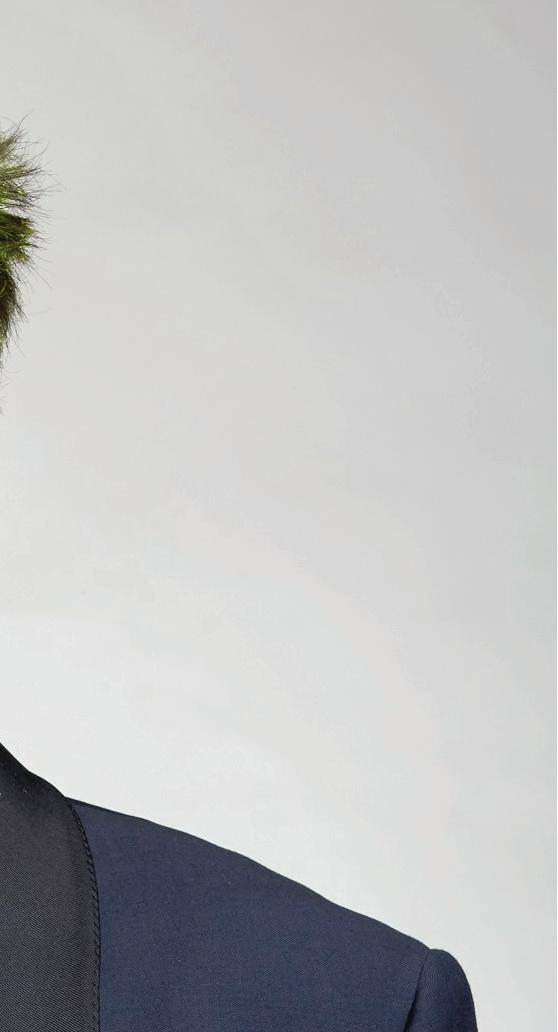
Musk made the acquisition official by walking into the building with a sink then posting a video to Twitter with the caption, “Let that sink in.”
Unfortunately, this wasn’t going to be the worst or cringiest thing to happen with Twitter in the following weeks after his purchase.
Musk says he purchased Twitter for the sole purpose to “help humanity, whom he loves” and “not to make money,” according to an Oct. 27 Twitter post.
However, in the same tweet specifically addressed to advertisers, Musk promises that he will keep Twitter a safe space for them and thinks ads can “delight, entertain and inform.”
He finishes his statement by reassuring advertisers, not humanity, that “fundamentally Twitter aspires to be one of the most respected advertising platforms in the world.”
Putting aside the cringy pomp, circumstance and nice words, Musk buying Twitter is detrimental to both collective action and freedom of speech, and it is already causing more harm than good.
Before his purchase of Twitter, the blue check mark system was used to denote active, notable and authentic official accounts for companies, politicians and users, according to the Twitter website.
After the purchase, Musk decided to sell blue check marks for $8 a month as a great “equalizer.”

This beautiful idea from the big brain
himself was shortly followed by shitposts of Nintendo’s Mario flipping the bird, George Bush calling for the death of Iraqis and an announcement for free insulin, all with a blue verified check mark next to them.
Other notable shitposts included the banana company, Chiquita, announcing they had “overthrown the Brazilian government” and O.J. Simpson “refused” to lie and said he did “it,” according to a Nov. 14 Washington Post article.
The greatest effect from all this was Elli Lilly, a pharmaceutical company selling insulin, lost billions of dollars in market cap valuation as its stock dropped 4% after tweets from a parody account announcing that its insulin would be free, according to the Washington Post article.
Musk continues to fail to recognize, amid the entirety of Twitter making fun of him,
that he doesn’t know how to run a social media company.
Twitter at its base has always made money off of its users.
There is an axiom that is prevalent in the social media space that goes, “If you aren’t paying for the product, then you are the product.”
At the same time, how many other companies can say they were paramount in toppling authoritarian governments in the case of the Arab Spring?
The Arab Spring was a wave of pro-democracy protests and uprisings that took place in the Middle East and North Africa beginning in 2010 and 2011, challenging some of the region’s entrenched authoritarian regimes, according to Encyclopedia Britannica Online.
Social movements and mass protests like the Arab Spring, the hashtag #MeToo, the
Black
a Nov. 22 NPR article.
People found a resource to organize and be heard, which turned out to be an effective means for political action and change.
This resource happened to be Twitter – I’m as surprised as everyone else – but nevertheless, it allowed people to hold power in their phone and change their world.
There is a chance that Twitter could continue to be a place for organization and change, but with the veracity of profiles in question and Musk’s clear attention toward advertisers over users, I find it hard to believe that Twitter has much longer on the app market.
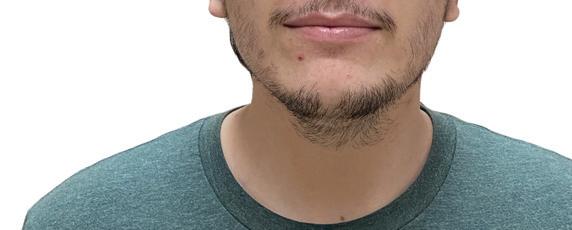
every good item is almost selling for its original retail price.
Clothing is only the tip of the nasty trend of TikTok making things more expensive.
Photography, which is already an expensive hobby, has become even more ridiculously priced.
Film photography became a massive trend since the pandemic, when many people were stuck indoors looking for new creative outlets.
TikTok trends have a gentrification problem that has become toxic, overpricing low-income people out of hobbies that were once accessible for them.

Thanks to TikTok, thrift stores are no longer a place for low-income people to buy good clothes for cheap. Thrift stores are being gouged and raided by teenagers to sell vintage clothing on apps like Depop and Grailed, showing off their hauls in viral videos.
Many thrift stores now sell second-hand goods for exorbitant prices, especially vintage graphic t-shirts.
Going thrifting is no longer a cheap way to get nice clothes. Most thrift stores have increased their prices significantly, with many stores now selling popular used clothes for well over $100.
Thrifting hauls are massively popular on TikTok. The hashtag #thrifting, has over 6.1 billion views on the platform with similar hashtags having incredibly insane popularity on the app.
There is an endless sea of teenagers and millennials showing off their hauls full of bags upon bags of thrifted clothes.
This is a far cry from the days I used to go to local thrift stores because there was a huge selection of cheap and great looking clothes everywhere you looked.
Nowadays, most thrifting consists of endlessly sorting through clothing racks and either finding nothing good in the entire store, or
However, its popularity has turned what used to be a cheap and fun way to shoot photos, into a worldwide phenomenon.
This is because the supply of film simply isn’t built for its sudden massive explosion in use.
Most camera stores can barely stock color film and when it is available, it is exponentially more expensive than what it used to cost. Fujifilm announced last April that the cost of their film would be increasing by 25% in North America. This followed a similar announcement from Kodak.
Kodak Gold 200, a popular consumer film, which used to run $10 for a pack of three, can now usually be found for almost $12 for a pack of only one. Kodak and Fujifilm, the world’s largest producer of camera film, can’t keep up with the current demand of people.
Kodak announced that it is hiring new film technicians for the first time in 20 years because of its unprecedented popularity, according to a tweet from the film manufacturer.
Now that TikTok has outpriced thousands of photographers from shooting film, the new trend has become digital cameras which emulate the classic look of it, as a cheaper and more practical option.
The Fujifilm X100V, a classicstyled digital camera, became a massively popular camera because of influencers on TikTok showing their audience its capabilities of taking photos that resemble the look of film photography.

Because of this, the camera quickly turned into a small phenomenon and Fujifilm had to make an official press release stating that orders greatly exceeded current production.
Almost overnight, prices on the camera almost doubled, from about $1,000 to almost $2,500. It became almost impossible to find online and became a fool’s errand to find in any brick and mortar retailer.
TikTok somehow made both forms of photography more expensive for everyone, especially hurting low income people that rely on cheap used gear to keep up with their hobby.
Used cameras as a whole
have increased in price to keep up with demand, which hurts photographers who rely on used gear to be cheap and plentiful. Now, because people want to be cool for their audience on the internet, more and more cameras are becoming unavailable to those who aren’t made of money.
Even things that aren’t hobbies have been over-popularized by social media trends.
The fans at concerts have also absolutely decreased in quality, thanks to many artists and bands blowing up on TikTok through audio clips and memes.
Nobody knows how to mosh respectfully
anymore. I’ve seen teenagers almost step on people who fell in the pit. Crowd safety is incredibly important, but seemingly has become overlooked in recent years.
With the way crowds have been at shows lately, I am scared of another incident like Travis Scott’s Astroworld Festival, where 8 people died because of a massive crush at the front of the stage, according to a Nov. 6, 2021 NPR article.

Don’t even get me started on the amount of people getting onto the stage at shows in recent months.

Everybody apparently forgot what the phrases “personal hygiene,” “personal space” or “basic respect” are, because every time I’ve seen a band that went viral on TikTok, the crowd was horrendous.
The amount of middle school and early high school students that are now seeing concerts for the first time is starting to absolutely ruin the quality of live shows, while also gouging the price of them.
In the last year, I’ve seen concert tickets increase in price exponentially, especially for bands. Last August, Ticketmaster started trending on Twitter as backlash to outrageous ticket prices. Prices for concert tickets have tripled since the mid 1990s, adjusted for inflation according to an Aug. 18 Time Magazine article.
Sometimes, it feels like I can barely keep up with all of these trends. Thanks to TikTok, I am constantly in fear of what will become the next popular thing.
One app single handedly made me afraid of things becoming popular. People on social media need to learn how to behave, and that chasing trends is not worth it when it makes experiences worse for everyone.
I know in my heart that “Criminal Minds: Evolution” is “copaganda” but my 14-year-old self is thriving with the Behavioral Analysis Unit, or the BAU, finally being able to say, “fuck.”
Copaganda, a portmanteau of cop and propaganda, is the depiction of police officers in a positive light because of the way they are presented in TV shows according to a July 1, 2020 Refinery29 article.

“Criminal Minds,” is a prime example of copaganda, with the BAU being the mainline defense against serial killers. The team might violate a suspect’s civil liberties but the narrative makes it seem heroic because it’s for the “greater good.”
“Criminal Minds: Evolution” is a shiny new streaming veneer on the nearly two decade long show, but ultimately is just a rehash of the same-old problems that
plague the BAU every season.
The plot is familiar: similar to season 10, the BAU must race against the clock to stop a network of serial killers while also facing budget cuts and the possibility of being split up, a conflict that emerges every few seasons.
My favorite moment so far was in episode two, “Sicarius,” when David Rossi,played by Joe Mantegna, said that the team should call the unsub, short for “unknown subject” and what the show calls the killers, “fuckface” instead of the name “Sicarius.” It had me hooting and hollering.
The first episode, “Just Getting Started,” does an amazing job showing how thinly stretched the BAU is. All of the team members are balancing their lives while working on individual cases and consulting with each other.
When a shipping container of bodies is discovered in Washington, Tara Lewis, played by Aisha Tyler, knows she has a
serial killer on her hands, but the FBI Deputy Director Doug Bailey, played by Nicholas D’Agosto, is reluctant to help her investigate.
Meanwhile, Rossi is obsessed with trying to solve the killing of a family in Virginia as he grieves the loss of his wife while Jennifer Jareau, played by A.J. Cook, is investigating a body found with a severed spinal cord.

Through investigation, they realize that there is a network of serial killers linked through a toolkit.

“Criminal Minds: Evolution,” is thriving on its new platform Paramount+, taking on a darker tone by tackling more subjects through the crimes depicted compared to when it was on cable TV.
The show has never been afraid to show disturbing imagery, but this season has taken it to a whole new level. This is exemplified in “Sicarius,” with an unsub who performs spinal surgery on his victims.
When I heard Spencer Reid, played by Matthew Gray Gubler, was not returning for this season, I was nervous.
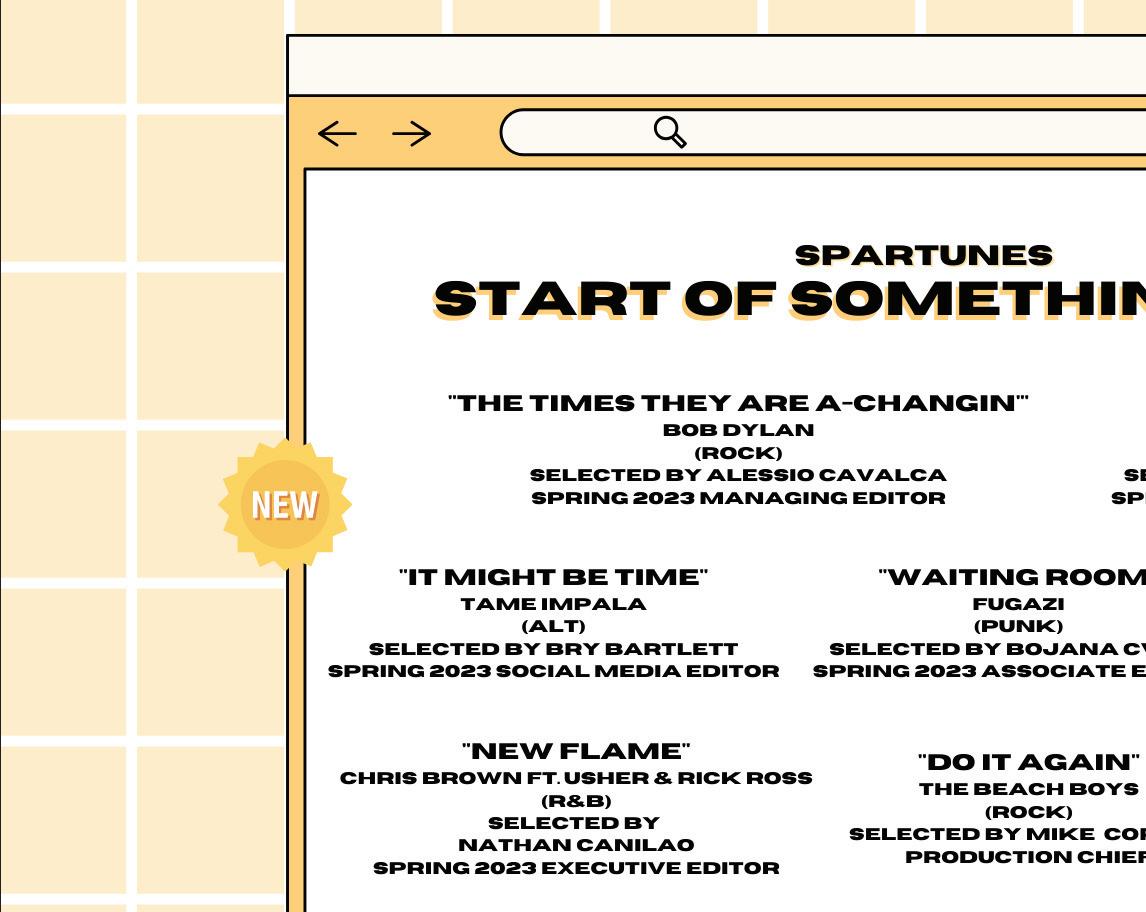
He has been in almost every single episode, so it was hard to imagine the series without him. However, the absence of the genius actually allowed the show to feel more grounded.
Still, certain classics are missing from the two new episodes. For instance, there is no scene where the team presents its profile of the killer, something that was in almost every single episode of the past 15 seasons.
The first two episodes premiered on Thursday, with the pilot free-to-watch via Paramount+’s YouTube channel, with new episodes being released on Thursdays.